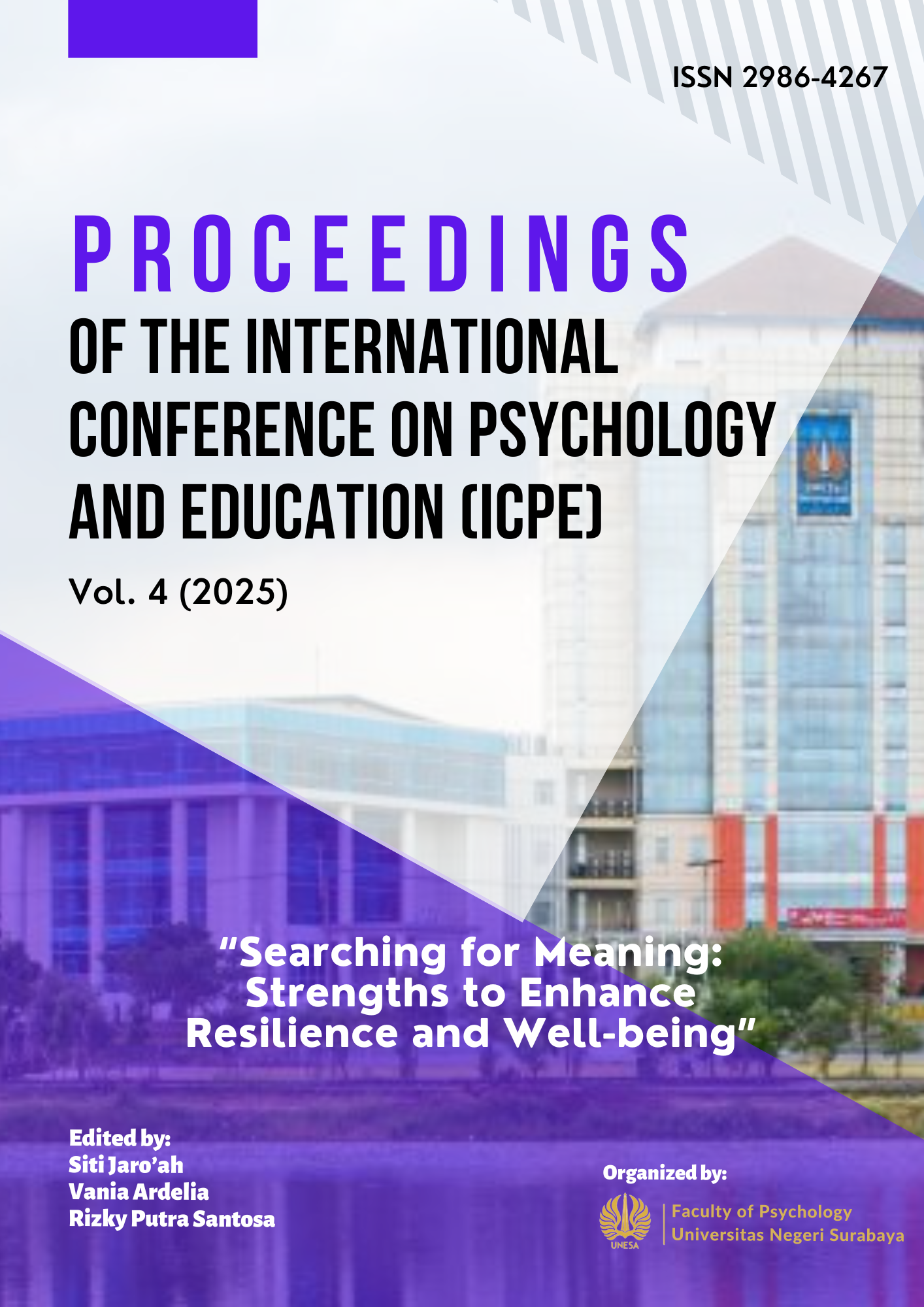Psychological Dynamics of Adolescents with Conduct Disorder: A Case Study Using Skinner’s ABC Model
Keywords:
conduct disorder, psychological dynamics, abc model, behaviorism, adolescentsAbstract
Conduct disorder focuses on an individual’s inability to control behavior that harms the rights of others or violates applicable social norms. This study aimed to explore and understand the psychological dynamics in individuals with behavioral disorders. The researcher used a qualitative method with a case study approach to reveal patterns of stimulus, response, and consequence based on Skinner’s ABC model. Data collection techniques were conducted through in-depth interviews with a 13-year-old subject and significant others, direct observation, and medical record review. The results showed that the subject exhibited chronic truant behavior for the past six months, physical and verbal aggression toward the mother, and impulsivity in decision making. Excessive interest in bantengan activities is the main trigger for the emergence of maladaptive behavior, which is then reinforced by consequences in the form of instant gratification and lack of control and sanctions from the environment.
Downloads
Published
How to Cite
Issue
Section
License
Copyright (c) 2025 International Conference on Psychology and Education (ICPE)

This work is licensed under a Creative Commons Attribution 4.0 International License.
Authors who publish in this journal agree to the following terms:
Copyright in any article is held by the author.
The author grants the journal, publication rights with the work simultaneously licensed under a Creative Commons Attribution License that allows others to share the work with an acknowledgment of the work's authorship and initial publication in this journal.
Authors may enter into separate, additional contractual arrangements for the non-exclusive distribution of the journal's published version of the work (e.g., posting it to an institutional repository or publishing it in a book), with an acknowledgment of its initial publication in this journal.
Authors are permitted and encouraged to post their work online (e.g., in an institutional repository or on their website) prior to and during the submission process, as this can lead to productive exchanges, as well as earlier and greater citation of published work.

